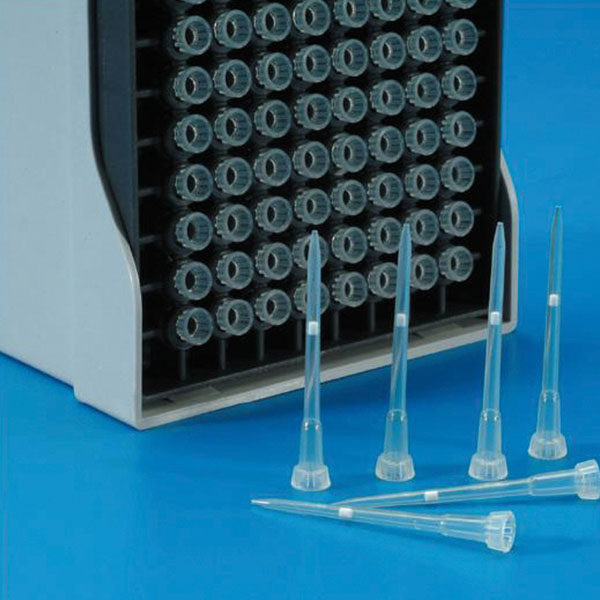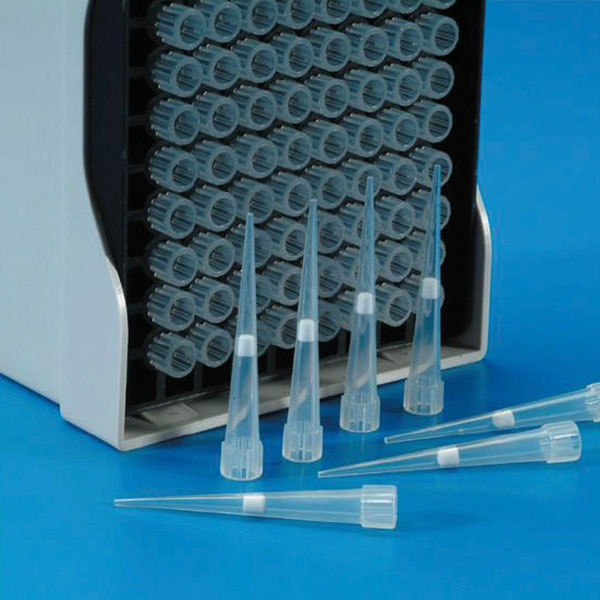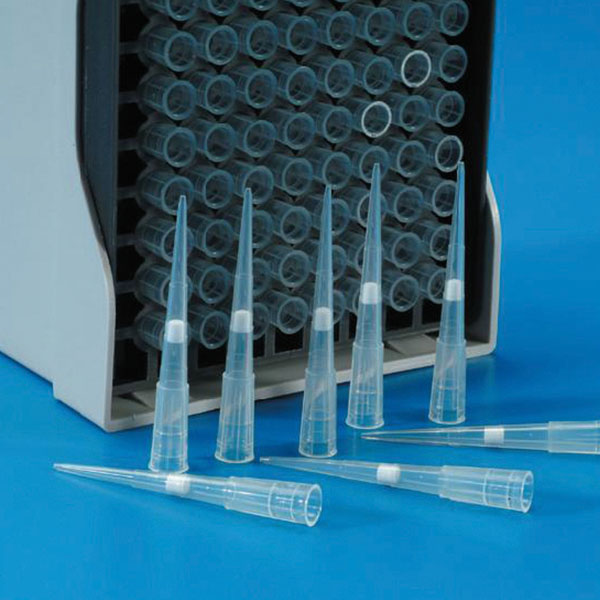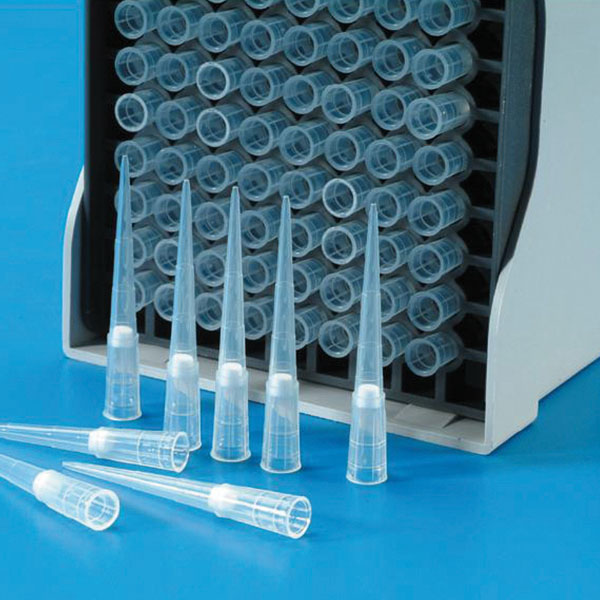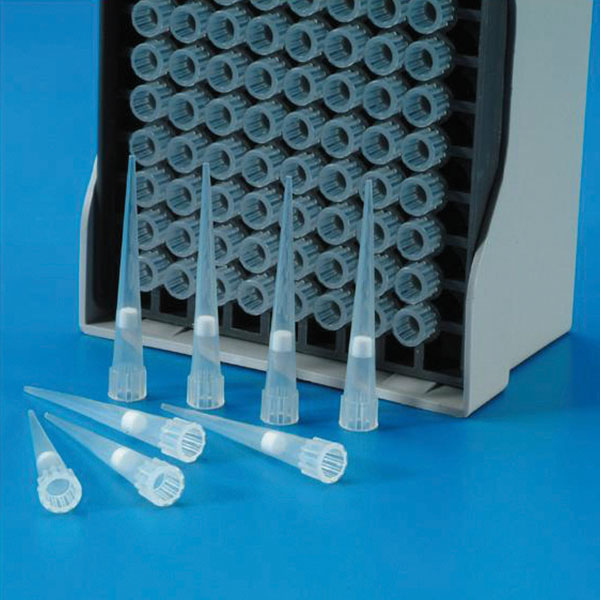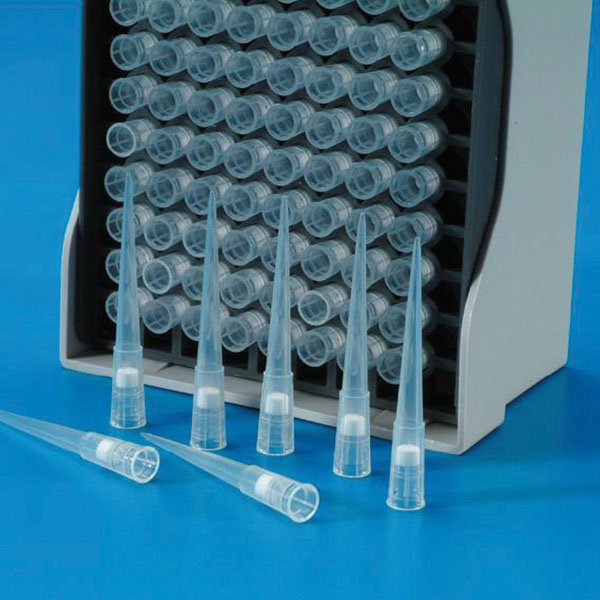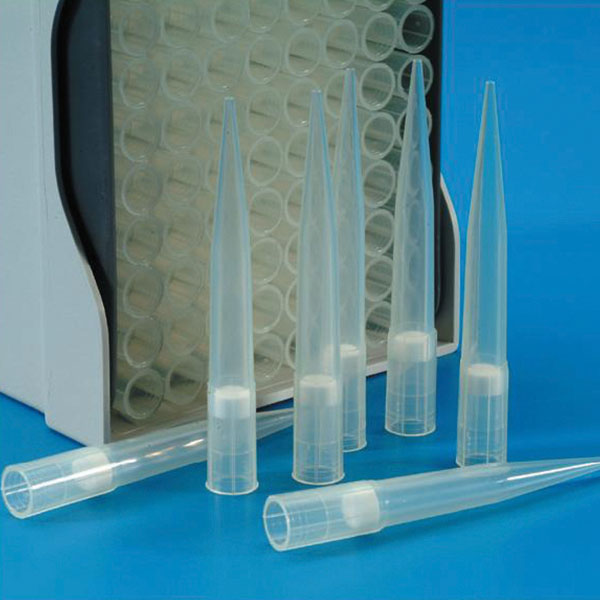When working in chemistry or biology laboratories, it may be necessary to work with small or very small quantities of liquid sample. These small quantities can be measured in microlitres μL.
The micropipettes are capable of working with these small quantities by selecting them from a scale on the instrument.
The selectable measurements usually take samples from 1,000-100 μL, 100-10 μL and 10-1 μL.
The micropipettes have a handle and in the central body they have a selector for the measurement to be taken.
The micropipettes operate by means of a button for suction and release of the liquid. A second button is used to eject the used tip.
Micro pipettes use disposable plastic tips, which guarantee cleanliness and, where desired, sterility.
In Colaver's online catalogue you will find a selection of pipettes and pipettors of different types, as well as pipetting tips from the most popular brands.
Micro pipettes are increasingly used in chemistry and biology laboratories and differ from conventional pipettes in that they can work with samples of minute size. Let's discover together their composition, how they work, some of their main brands and the general prices of these particular accessories.
How they are made
In most cases, micro pipettes correspond to simple tubes made of glass or plastic, the most common shape being cylindrical. One end is a beak, while the other is a tip that can be used to draw in and release liquid. Their general conformation is extremely simple. First of all, a micropipette is characterised by a main block. The latter consists in turn of the handle, the volume selector and the volume indicator, which are capable of calibrating the precise amount of liquid taken from the product.
To this we must add two buttons. The first is used to suck in and release the liquid, while the second is intended to eject each tip. The second part of a micropipette coincides precisely with a set of plastic tips. We are talking about accessories that are distinct and separate from the actual body, always for single use and ensuring maximum cleanliness. In some cases, sterile tips may be used to carry out some rather delicate and complicated applications.
How they work
Micropipettes are very sophisticated instruments that must be properly graduated before their actual use.
The operation of these laboratory objects is extremely complicated for those who are not experts in chemistry or biology.
The evaluation starts with the choice of the approximate amount of liquid to be taken. In general, this can be 1000-100 μL, 100-10 μL or even 10-1 μL. μL stands for microlitres, which correspond to the millionth part of a litre and the thousandth part of a millilitre, and are therefore at least microscopic in size. Consequently, when dealing with such infinitesimal measurements, the degree of precision to be adopted for operation increases dramatically and great care must be taken to avoid even the most imperceptible tampering.
A micropipette is characterised by a mode of operation that is both accurate and based on fairly banal principles. In fact, it is sufficient to calibrate the temperature and volume of the device to make it work at its best. The tip on the opposite end of the handle must then be added. A special button must be pressed with one's fingers to allow the tip to draw out the amount of liquid required for proper analysis. The liquid must then be submerged in a sample.
After pressing the previous button, it must be slowly released according to the liquid that is to be injected. At this point, there is nothing left to do but pull out and squeeze to move the contents into a cuvette, the container in which the sample to be analysed is stored. Alternatively, any other type of sample holder that allows the sample not to alter its characteristics is also fine. A few minutes and the operation is completed, although several specific skills are still required to carry it out at its best.
Some of the industry's leading brands
.
It is now time to take a look at some of the leading brands in the production of micro pipettes, with the ability to design high-precision models. Let us take a look at some of the brands that have also managed to achieve great success with such models:
Eppendorf
Eppendorf is a leading company in the vast field of biological sciences, and is dedicated to the analysis and manipulation of liquids. Headquartered in Hamburg, Germany, the company is constantly growing and offers numerous solutions for chemists and biologists who have to perform certain highly sensitive operations. Those supplied by Eppendorf are also suitable for less experienced users and are characterised by an intuitive yet extremely robust design. Each model can be adjusted with the utmost precision to take the exact amount of liquid needed for a scientific experiment. Also interesting is the presence of a good valve assembly, which allows the suction of liquids without the need to exert excessive pressure. Finally, an ergonomic lever facilitates the suction and diffusion of each liquid and ensures that it is never tampered with.
Gilson
Over the years, Gilson has also acquired a large customer base in the particular field of micro pipettes.
The company was founded in the 1940s in the United States, at the University of Wisconsin. There are small pipettes suitable purely for routine work and other models capable of a higher degree of precision, making them suitable for even quite elaborate tests. A comfortable PDVF handle ensures that pipetting is always more precise and methodical, even by substantially limiting heat transfer with manual systems. Maintenance, on the other hand, is facilitated by a convenient ejector clip, which allows the liquid being analysed to flow out without difficulty.
Op Line
The range offered by Op Line includes a long series of models suitable for any purpose. They are small, variable-volume air displacement pipettes capable of covering an extremely wide capacity range. Simply rotate the piston to take the volume required for an experiment or manipulation. The grip is deliberately rounded and ensures maximum ergonomics, adapting perfectly to the shape of the palm of the hand. Also very interesting is the idea of making the button for ejecting each tip larger and more precise. All in all, each product aims at a correct mix of comfort and functionality at the highest market level.
Mettler Toledo
The latest brand presented in terms of high-precision production is Mettler Toledo.
The latter has chosen to devote its own division, Rainin, to just such a category of models and accessories. There are very ergonomic, electronic, multi-channel and universal products. The company relies on simple insertion of the tips, which makes the work of experts less tiring. In addition, ejection is carried out with 85% less force than usual, with clear benefits that are reflected in each work step. Pipetting becomes even more accurate thanks to Good Pipetting Practice, resulting in optimised liquid handling. In addition, Mettler Toledo are enhanced by the important BioClean certification, aimed at sustainable cleaning.
Prices
They are commercially available at quite varied prices, suitable for all types of customers.
For example, there are fixed-volume Gilson micro pipettes that can be purchased for just over 100 euros, while variable-volume versions start at 250 euros. The most sophisticated models can also be around 400 euros. In any case, you have to know how to choose the budget to invest according to the use you intend to make of a given product.
It is obvious that for a high-precision operation you need to spend a higher amount, whereas for a medium-level test you can save money without any particular worries.
Useful links:
Micropipettes



